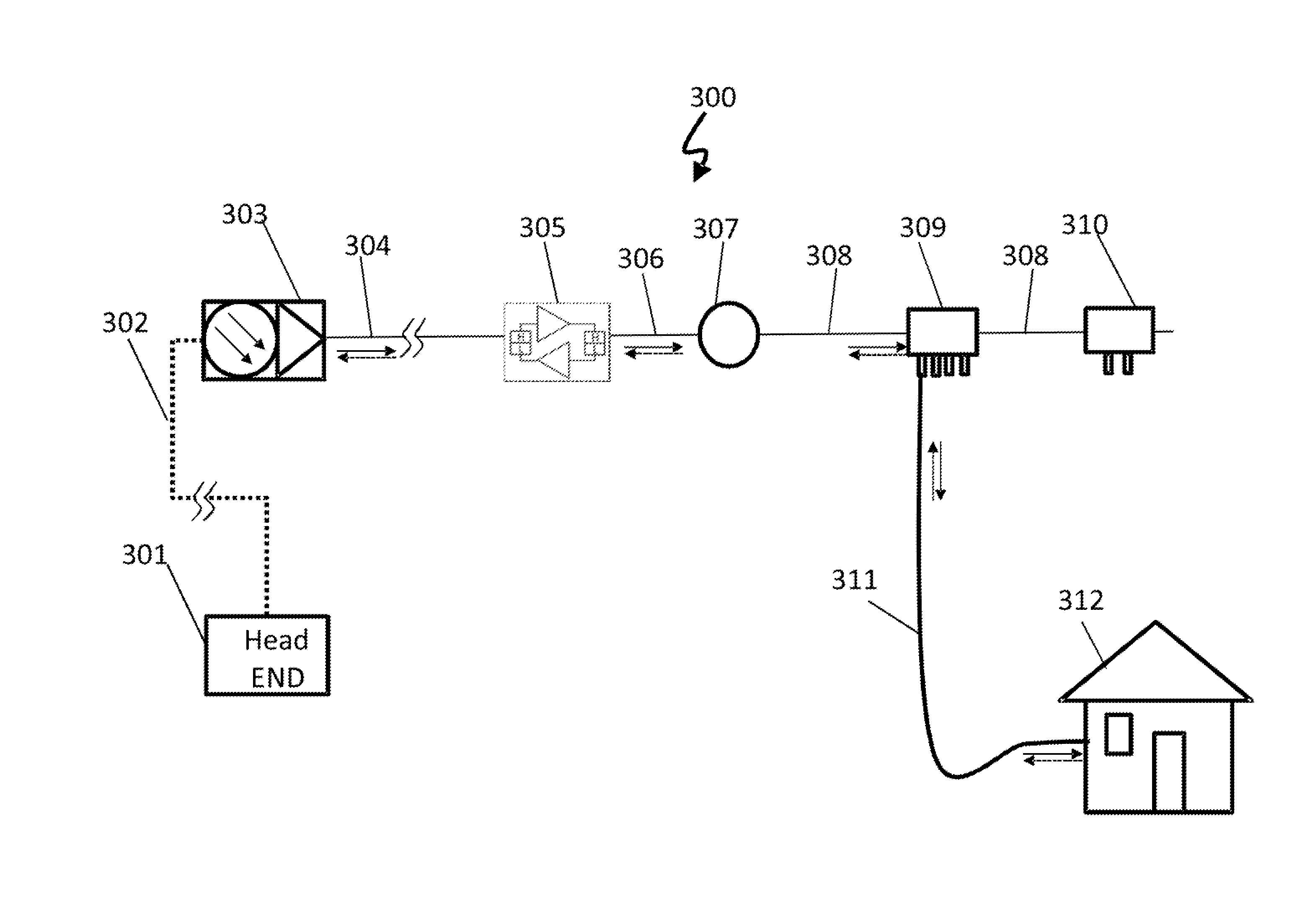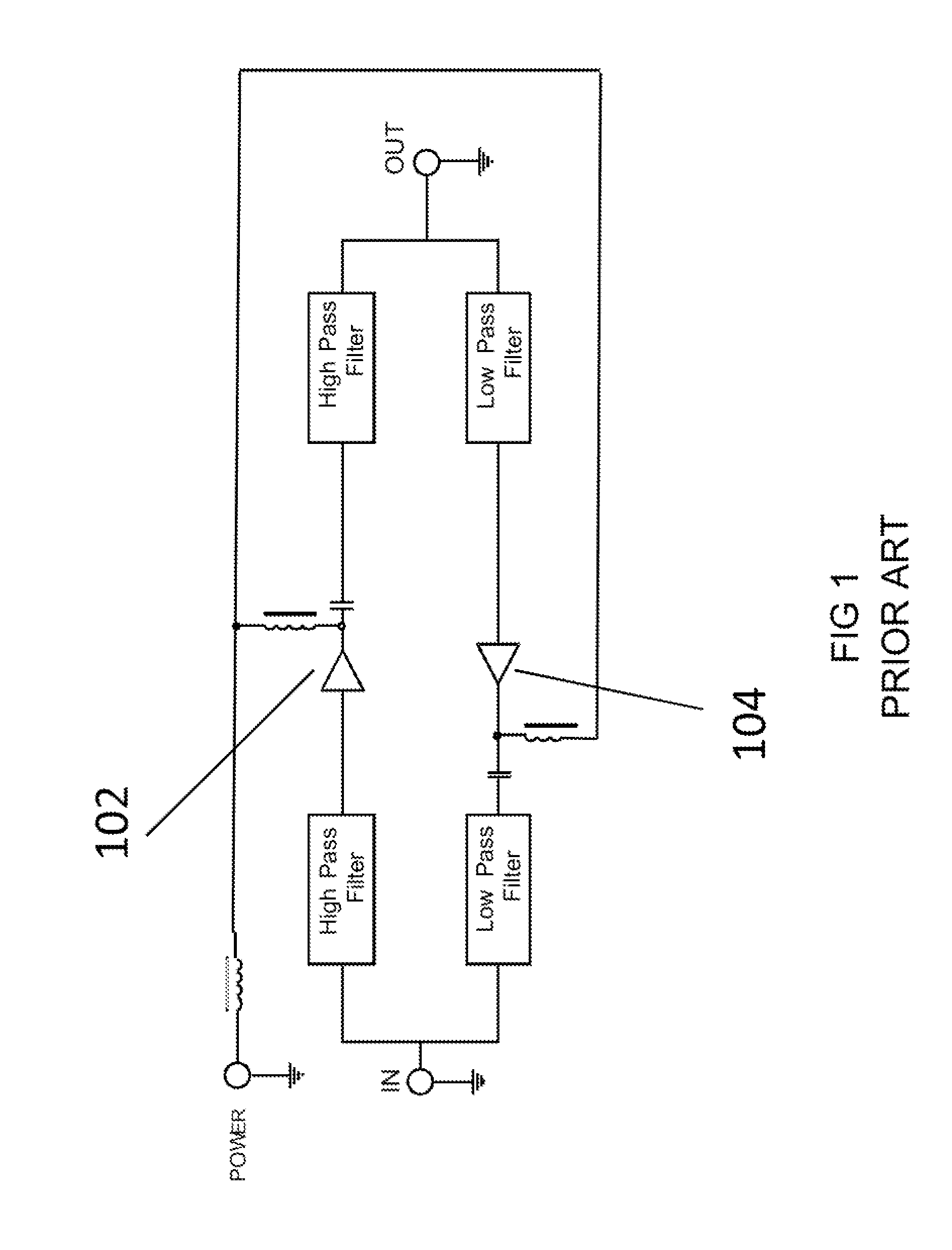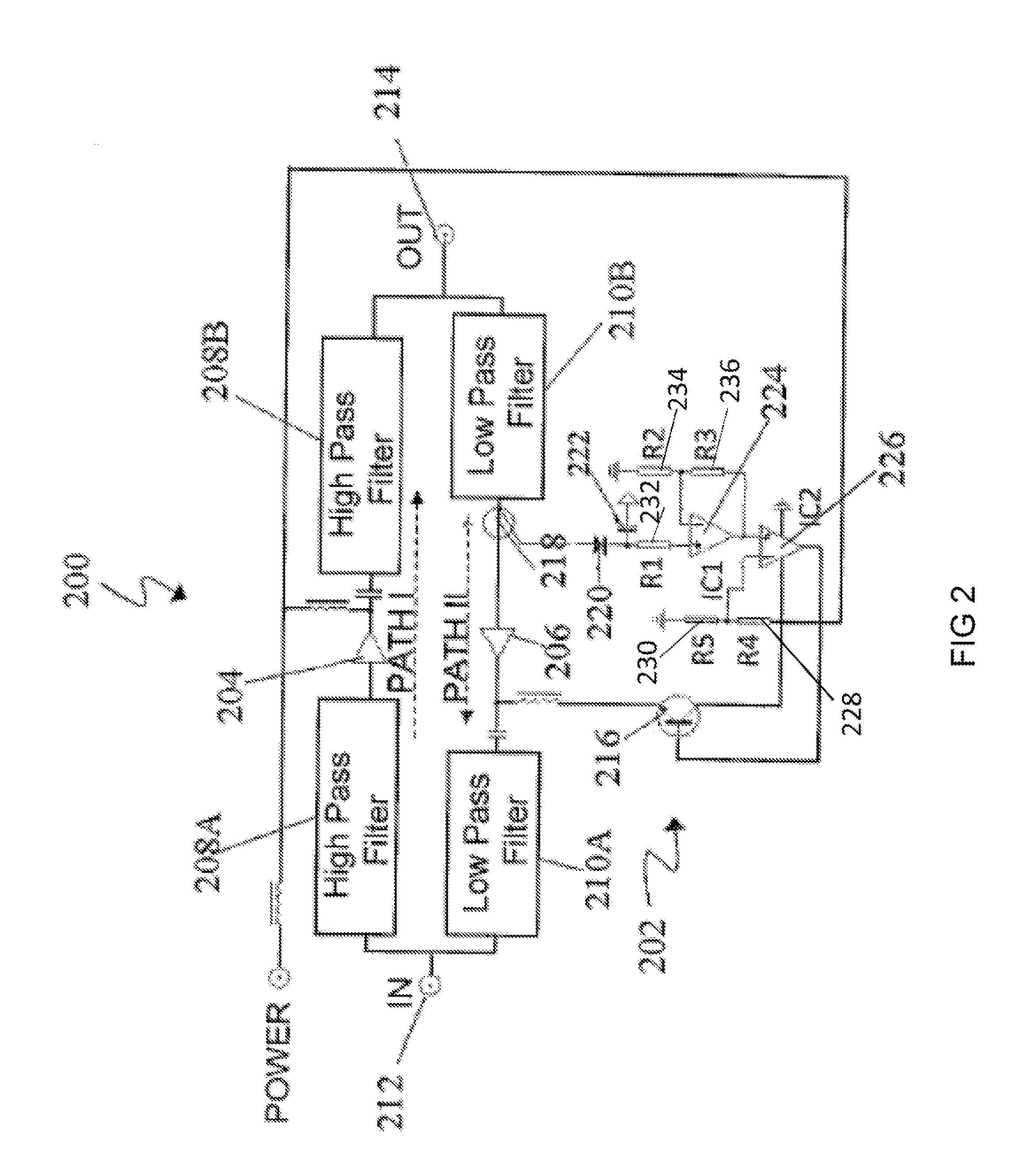System for reducing return signal noise without radio frequency switching devices
- Summary
- Abstract
- Description
- Claims
- Application Information
AI Technical Summary
Benefits of technology
Problems solved by technology
Method used
Image
Examples
Embodiment Construction
[0024]As mentioned earlier, comprehensive information networks are characterized as 2-way transmission systems having information flow to the head-ends via terminal interchanges and relays.
[0025]Transmission from head-end to terminal is “Forward” or “Downstream,” and transmission from terminal to head-end is “Return” or “Upstream”. A signal going downstream is a point-to-interface “broadcasting”, and is split; signals going upstream are interface-to-point converged. Either “broadcasting” or “converging” are conducted by splitters.
[0026]In the upstream path, upstream signals are combined with noise coming from various paths. Eventually, all noises are funneled to the head-end, the so called “Funnel Effect”. However, some of the noise components may have a high enough energy to mask the return signals, thus, may seriously affect the quality of the “Return” transmission.
[0027]Such noise components mostly come from terminals such as a cable modem where the commonly used amplifiers are o...
PUM
 Login to view more
Login to view more Abstract
Description
Claims
Application Information
 Login to view more
Login to view more - R&D Engineer
- R&D Manager
- IP Professional
- Industry Leading Data Capabilities
- Powerful AI technology
- Patent DNA Extraction
Browse by: Latest US Patents, China's latest patents, Technical Efficacy Thesaurus, Application Domain, Technology Topic.
© 2024 PatSnap. All rights reserved.Legal|Privacy policy|Modern Slavery Act Transparency Statement|Sitemap



